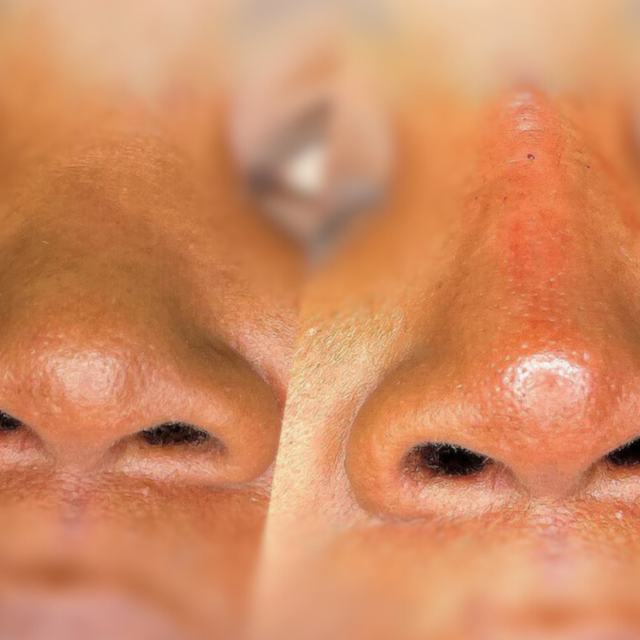
A bulbous or wide nose tip can sometimes detract from the overall symmetry and elegance of your face. For those seeking a more refined, balanced nasal appearance, addressing a bulbous or wide tip can be transformative.

A bulbous or wide tip correction is typically performed for noses characterised by a rounded, broad, or poorly defined tip, resulting from excess cartilage, thick skin, or a combination of both. This nasal shape may cause the tip to appear disproportionate to the rest of the face, leading many to seek corrective treatment.
At SRGN, Dr Ayad Harb, a world-renowned plastic surgeon and pioneer of non-surgical rhinoplasty, uses his extensive experience and artistic precision to deliver results that not only refine the shape of the nose but also maintain a natural and harmonious look with the rest of your facial features. Whether you’re considering surgical or non-surgical options, we offer personalised solutions to achieve the nose tip you’ve always desired.
A bulbous tip caused by excess cartilage can be commonly treated with surgical rhinoplasty. However skilled injectors such as Dr Ayad Harb and his team can provide exceptional results through the 3-Point-Rhino technique for non-surgical rhinoplasty. This procedure reshapes the cartilage to create a more refined and proportional tip that suits your facial structure.
For cases where a bulbous tip is due to thick skin rather than cartilage, non-surgical rhinoplasty using dermal fillers can provide subtle yet impactful results. This option enhances the definition of the nose tip without the need for surgery.
A wide nose tip can be narrowed and reshaped using both surgical and non-surgical rhinoplasty techniques, depending on the severity and the patient’s preferences. These treatments aim to create a more elegant, streamlined appearance.
Non-Surgical Rhinoplasty is a great treatment for those seeking a less invasive approach, non-surgical rhinoplasty offers a temporary solution with minimal downtime. Dermal fillers are used to add definition and contour to the nose tip, creating a more aesthetically pleasing shape without surgery.